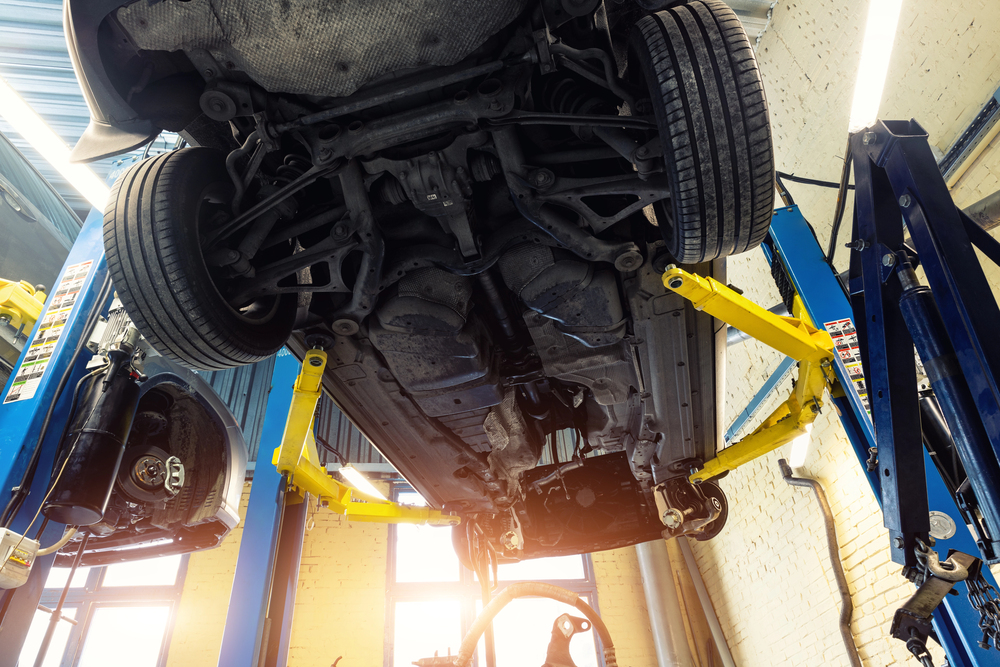Your vehicle has sustained structural damage in an accident. Now what? As a vehicle owner, your primary concern is getting back on the road as soon as possible. However, restoring your vehicle to its pre-accident condition will require time. While the exact timeline for auto body repairs in South Jersey will depend on several factors unique to your situation, understanding the repair process can help you set realistic expectations.
Key Takeaways
- Structural repairs take 5-10 days for minor damage and 4+ weeks for severe issues, depending on damage, parts, and insurance.
- The process includes assessment, disassembly, frame straightening, component replacement, reassembly, and refinishing.
- Laser-guided measuring, welding reinforcement, and color-matching restore the vehicle’s safety and appearance.
- Repair complexity depends on the frame type, required parts, and specialized equipment.
- Choose a skilled auto body repair shop in South Jersey to ensure that your vehicle is restored safely and efficiently.
Understanding Structural Repairs
Accidents can cause varying degrees of damage. Sometimes, you can drive away with only superficial or cosmetic damage that does not impact the performance of the vehicle. Other times, your vehicle unfortunately sustains structural damage, which affects the frame. The frame is the foundation of the car and holds components like the engine, transmission, suspension, and body panels. Furthermore, the frame maintains the vehicle’s shape and alignment.
There are two kinds of frames: unibody frames, which integrate the body and frame into a single structure (common in modern vehicles), and body-on-frame designs, where the body sits on a separate frame (typically found in trucks and SUVs).
Factors That Influence Repair Time
There are several factors that determine how long structural repairs may take:
- Extent of Damage: Minor frame misalignment may take a few days, while significant structural damage requiring extensive welding and component replacements can take several weeks.
- Vehicle Make and Model: Some cars have complex designs or require special parts, which can extend the repair timeline.
- Availability of Parts: Some parts may need to be ordered, affecting the time you need to wait to get your car back.
- Insurance: Insurance claims and approvals can delay repairs, particularly when the case needs to be assessed more thoroughly.
- Shop Workload and Equipment: The body shop’s workload will also affect how quickly repairs can be done on your vehicle. This is especially true when your car needs specific equipment in order to be completely fixed.
With that in mind, here is a general breakdown of structural repair timelines:
- Minor Repairs: 5-10 days
- Moderate Repairs: 2-3 weeks
- Extensive Structural Damage: 4 weeks or more
The Structural Repair Process
Now let’s take a more detailed look at the repair process, including how long each step takes.
1. Initial Assessment and Estimate (1-3 Days)
A technician thoroughly inspects the vehicle, assessing the extent of the damage. A repair plan is created, and an estimate is provided. If insurance is involved, additional time may be needed for claim approval. During this phase, digital imaging and diagnostics may be used to provide a more accurate damage assessment.
2. Disassembly and Inspection (2-5 Days)
After approval, the vehicle is disassembled to uncover any hidden damage. Further assessments may adjust the repair estimate and timeline if additional structural issues are found. This step is crucial to the process, as the automotive technician will search for any undiscovered damages and make adjustments to the repair plan, if necessary.
3. Frame Repair and Straightening (3-7 Days)
Using specialized equipment, such as frame machines and laser-guided measuring systems, technicians realign the frame to factory specifications. Reinforcement techniques, such as welding and additional support structures, are then used to restore strength and stability to the frame.
4. Component Replacement (3-7 Days)
Damaged structural components, such as frame rails or crumple zones, are repaired or replaced. Welding and reinforcement are done to restore strength. In cases where the damage is extensive, sections of the frame may need to be cut out and replaced entirely. Technicians ensure that all new components are properly fitted and secured to maintain the vehicle’s integrity.
5. Reassembly and Final Inspection (3-5 Days)
Once structural repairs are complete, all components are reinstalled, including suspension, mechanical systems, and safety features like airbags and sensors. A final inspection ensures the vehicle meets safety standards before moving to the refinishing stage. Technicians perform alignment checks, sensor recalibrations, and additional safety tests to verify that all systems function correctly.
6. Paint and Finishes (3-7 Days)
If body panels were repaired or replaced, there is a high chance your vehicle will also need a paint job. The panels are prepped, primed, and painted using color matching technology so the damage disappears. A clear coat is also applied to ensure durability.
Looking for a South Jersey Auto Body Repair Shop?
Structural repairs are a detailed and time-intensive process, but they are essential for restoring your vehicle’s safety and performance. While the duration varies based on damage severity, parts availability, and shop workload, having a clear understanding of the repair stages can help you plan accordingly.
Find yourself needing repairs after a collision? Look no further than Elmer’s Auto Body of South Jersey. We have three convenient locations in Sewell, Mt. Ephraim, and Medford. Let us help you get your car back on the road. Get in touch with us today to schedule your appointment or ask us any questions you may have.

